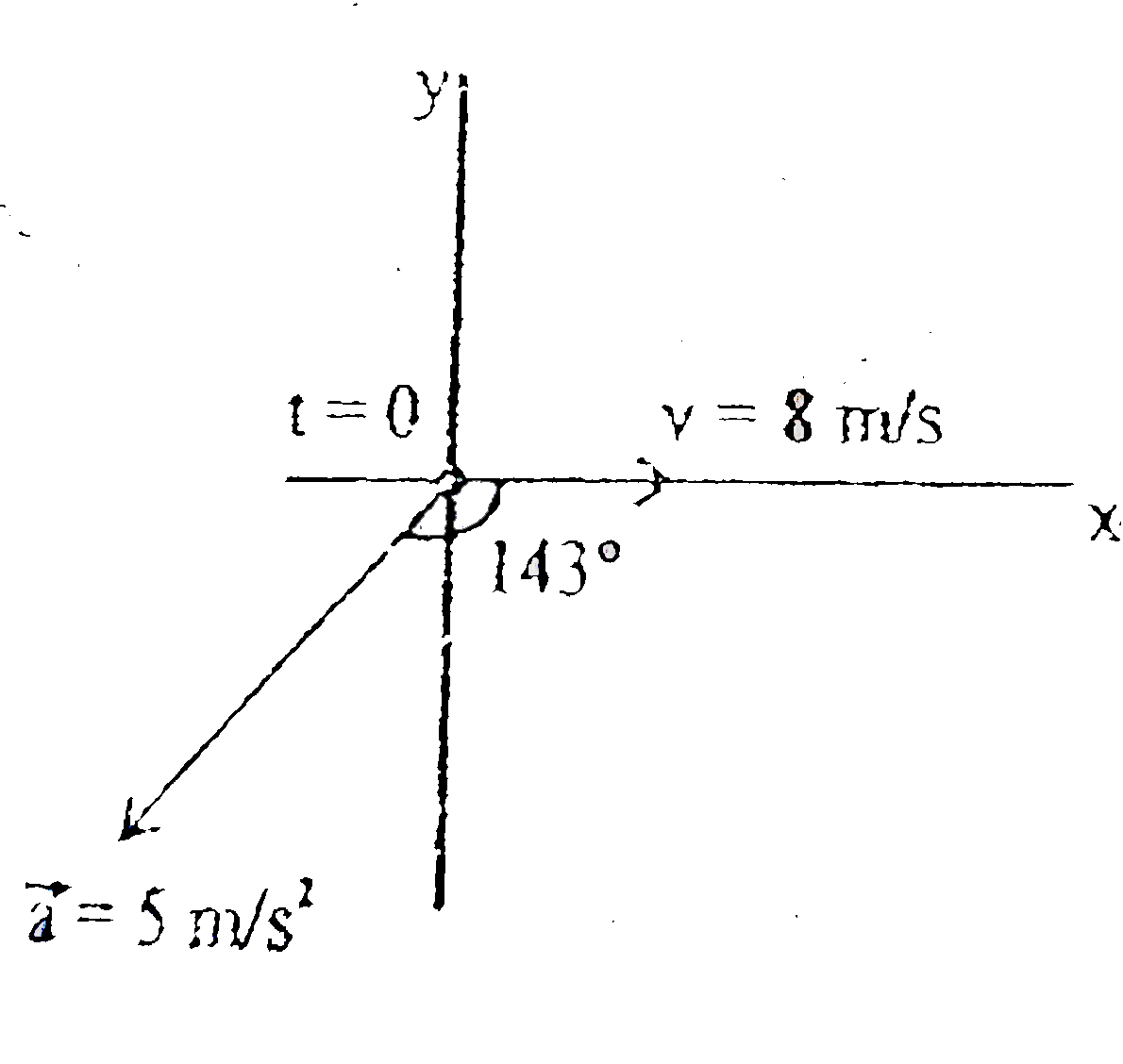In a two dimensional motion of a body, prove that tangentiol acceleration is nothing but component of acceleration along velocity.
v=vxˆi+vyˆj
Accleration a=dvxdtˆi+dvydtˆj
Component of a along v will be, a.v|v|=vxdvxdt+vy.dvydt√v2x+vyy
Further, tangential acceleration of particle is rate of change of speed.
or at=dvdt=ddt(√v2x+v2y) or at=12√v2x+vy2[2vx.dvxdt+2vydvydt]
or at=vx.dvxdt+vy.dvydt√v2x+v2y
Form Eqs. (i) and (ii), we can see that
or Tangential acceleration=component of acceleration along velocity.
Topper's Solved these Questions
- BOOK - DC PANDEYCHAPTER - CIRCULAR MOTIONEXERCISE - Exercise 10.17videos
CIRCULAR MOTION
- BOOK - DC PANDEYCHAPTER - CIRCULAR MOTIONEXERCISE - Exercise 10.27videos
CIRCULAR MOTION
- BOOK - DC PANDEYCHAPTER - CIRCULAR MOTIONEXERCISE - Solved Examples2videos
CIRCULAR MOTION
- BOOK - DC PANDEYCHAPTER - CENTRE OF MASS, LINEAR MOMENTUM AND COLLISIONEXERCISE - Level 2 Subjective21videos
CENTRE OF MASS, LINEAR MOMENTUM AND COLLISION
- BOOK - DC PANDEYCHAPTER - COMMUNICATION SYSTEMEXERCISE - Only One Option is Correct27videos
COMMUNICATION SYSTEM
Similar Questions
A particle moves in such a way that its position vector at any time t is →r=tˆi+12t2ˆj+tˆk.
Find as a function of time:
(i) The velocity (d→rdt) (ii) The speed (∣∣∣d→rdt∣∣∣) (iii) The acceleration (d→vdt)
(iv) The magnitude of the acceleration
(v) The magnitude of the component of acceleration along velocity (called tangential acceleration)
(v) The magnitude of the component of acceleration perpendicular to velocity (called normal acceleration).View SolutionProjectile motion is a two dimensional motion with constant acceleration. Is this statement true or false?
View Solution
Knowledge Check
- Question 1 - Select One
For any particle moving with some velocity (→v) & acceleration (→a), tangential acceleration & normal acceleration are defined as follows.
Tangential acceleration - The component of acceleration in the direction of velocity.
Normal acceleration - The component of acceleration in the direction perpendicular to velocity.
If at a given instant, velocity & acceleration of a particle are given by .
→c=4ˆi+3ˆj
vaca=10ˆi+15ˆj+20ˆk
Find the tangential acceleration of the particle at the given instant :-A17(4ˆi+3ˆj)B175(4ˆi+3ˆj)C17(4ˆi−3ˆj)D175(4ˆi−3ˆj) - Question 2 - Select One
For any particle moving with some velocity (→v) & acceleration (→a), tangential acceleration & normal acceleration are defined as follows.
Tangential acceleration - The component of acceleration in the direction of velocity.
Normal acceleration - The component of acceleration in the direction perpendicular to velocity.
If at a given instant, velocity & acceleration of a particle are given by .
→c=4ˆi+3ˆj
→a=10ˆi+15ˆj+20ˆk
Find the normal acceleration of the particles at the given instant :-A−9ˆi+12ˆj+50ˆk5B−9ˆi−12ˆj−50ˆk5C−18ˆi+24ˆj+100ˆk5D18ˆi−24ˆj−100ˆk5 - Question 3 - Select One
Assertion : Velocity and acceleration of a particle are given as,
v=ˆi−ˆjanda=−2ˆi+2ˆj This is a two dimensional motion with constant acceleration.
Reason : Velocity and acceleration are two constant vectors.AIf the both Assertion and Reason are true and the Reason is correct explanation of the Assertion.BIf both Assertion and Reason are true but Reason is not the correct explanation of Assertion.CIf Assertion is true, but the Reason is false.DIf Assertion is false but the Reason is true.
Uniform motion along a circle is a an acceleration motion. Comment.
View SolutionThe direction of acceleration in uniform circular motion is along the
View SolutionAn object is moving in x−y plane its velocity and acceleration at t=0 are represented in figure.

The ratio of magnitude of velocity to magnitude of component of acceleration along velocity at t=0 :-View SolutionAssertion : Simple harmonic motion is an example on one dimensional motion with non-uniform acceleration .
Reason : In simple harmonic motion, acceleration varies with displacement linearly.View SolutionDimensional formula of Acceleration
View Solution

